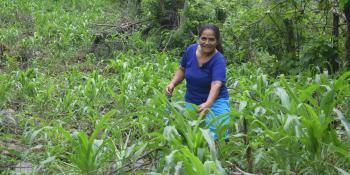Talking globally, acting locally

A recent Economist article reports on the success of conservation projects that protect forests and the biodiversity contained within them.“Political enlightenment and an economic boom have led to great progress in the Amazon rainforest, with Brazil’s deforestation plummeting. Indonesia’s rate has also dropped. The possibility of halting global deforestation has become a plausible and thus worthwhile goal.”
However, the article argues, such progress has little to do with the international treaty meant to put such projects in motion—the Convention on Biological Diversity (CBD), created at the Rio Earth Summit in 1992.
“The changed language of conservation owes little to the well-intentioned work of the CBD. Progress on forestry has come about largely through national efforts, helped by lower demand for commodities and reinforced by bilateral agreements to do with climate change.
And the global perspective that the CBD has some claim to representing can be overblown…. Most of the time ecosystem services and natural capital are specific to a particular area, country or region, and that is the level where they ought to be supported. Donor countries, banks and consortia promoting new financial models for conservation can provide ever more such support.”
Ecuador’s Socio Bosque may be a perfect example of such national ecosystem payment systems. According to the country’s Environment Ministry, “The program consists of direct annual monetary incentives per hectare of forest given by the Government to individual landowners or indigenous communities who voluntarily decide to protect their native forest.
…With the program, the government aims at protecting 4 million hectares of native forest, significant reductions of GHG emissions caused by deforestation, and improvement of the living conditions of 1 million of the poorest people of the country. Socio Bosque is the central component of a national REDD proposal of Ecuador”
Indeed, many similar initiatives, at local or national scales, are emerging all over the world. In some sense, they work on the practical (but perhaps seemingly quaint) honor system: individuals or communities pledge to protect native forest or trees, and in return they are paid for theoretically keeping their promises. In most cases, there are random checks, but the idea is not close vigilance not exact calculations of the carbon sequestered. But for all the good that these programs do, they may be impossible to fit into international trading/payment schemes with stringent requirements for monitoring and measuring.
This may be an important lesson for agricultural adaptation. To what extent can farmers be expected to perfectly measure carbon sequestered from silvo-pastoral systems? How much and how quickly can we expect international treaties to trickle down to immediate and tangible change at the farm level? In the same way that donors can support biodiversity by funding smaller, but effective, projects, so too can philanthropists and aid organizations/countries help the agricultural adaptation cause. Much can be done to close the yield gap and to better prepare farmers for the dynamic climate changes to come.


